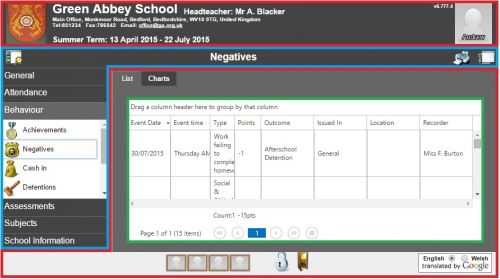Difference between revisions of "Personalisation"
| Line 27: | Line 27: | ||
The appearance of Insight is defined by three separate files which affect different aspects of the appearance. The image below illustrates the areas of Insight that are affected by each file: <br> <br> | The appearance of Insight is defined by three separate files which affect different aspects of the appearance. The image below illustrates the areas of Insight that are affected by each file: <br> <br> | ||
| − | [[Image:insight_customise_help.jpg]] <br> <br> | + | [[Image:insight_customise_help.jpg|500px]] <br> <br> |
{|class="wikitable" | {|class="wikitable" | ||
Revision as of 10:36, 10 August 2015
Change the way Insight looks
The appearance of Insight can be easily changed and amended to suit your taste or school colour scheme. There are various sections of Insight that can be changed, and methods for applying these changes, which are described below.
Built-in colour schemes
Insight has a number of preset colour schemes which you can select from when running the service controller. On the Commit tab there is a drop down which allows you to select a theme. Chose one and then click Begin.
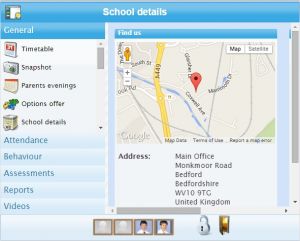 |
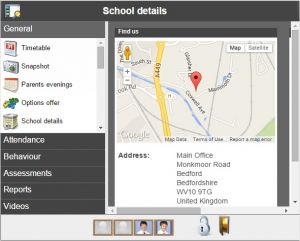 |
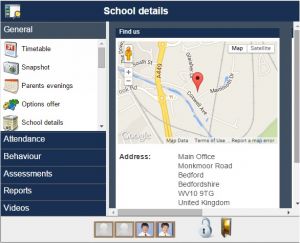
|
| Blue Plastic |
Metropolis |
Blue Metropolis |
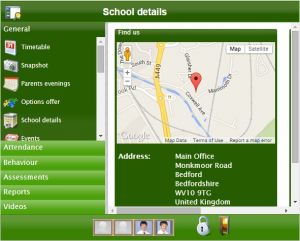 |
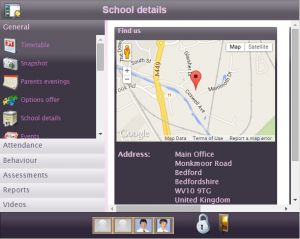 |
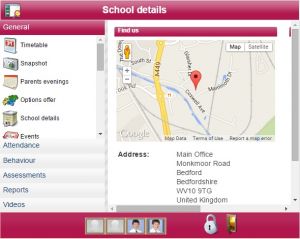
|
| Olive |
Purple Grey |
Red Wine |
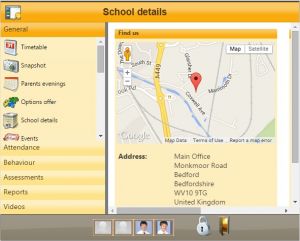 |
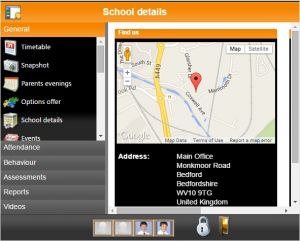
| |
| Soft Orange |
Web 2 |
Custom colour schemes
To create a custom colour scheme for Insight you will need access to the IIS server on which Insight is installed. You can take copies of existing files that affect the Insight colour scheme and then change them to suit your needs.
The appearance of Insight is defined by three separate files which affect different aspects of the appearance. The image below illustrates the areas of Insight that are affected by each file:
| Colour | Areas | File |
|---|---|---|
| Red | Header, footer and background | styles.css or style.ascx |
| Blue | Page title and left-hand menu | jquery-ui-1.8.custom.css |
| Green | Grids | ASPxGridView.skin & ASPxGridView.skin.bak |
On the Insight server, browse to the Insight folder. You will need to create several new folders. Within the Insight folder, create a folder called "_Themes" if one does not already exist. You now need to create three folders in different locations, but will with exactly the same name. This name will also be the name of your new colour scheme.
- within the _Themes folder, create a folder with the name of your colour scheme
- within the _Scripts\jQuery\css folder, create a folder with the name of your colour scheme
- within the App_Themes folder, create a folder with the name of your colour scheme
The design and colours of these items are defined in an .ascx file. Search the Insight folder for a file called "style.ascx", then copy and paste this file into the _Themes\YourColourScheme folder.
- To do this, create a folder in the Insight folder -> _Themes, for example 'School name theme'. Also, from within the App_Themes folder, open the standard folder for the view of your choice, for example Olive, and copy and paste the styles.ascx into the folder you created.
Menu and pop-up
This includes items like the login box, menu list and pop-up boxes which appear within the menus or when buttons are selected from a grid screen.
- To do this create a folder in the Insight folder -> Scripts -> jQuery -> css for example 'School name theme'. Back in the css folder open the standard folder for the view of your choice, for example le-frog, and copy and paste the jquery-ui-1.8.custom.css file and possibly the images folder into the folder you created.
Grid view changes
This option makes amendments to the grid displays such as the grid outline, column headers and tick boxes.
- To do this, create a folder in the Insight folder -> App_Themes, for example 'School name theme'. Also, from within the App_Themes folder, open the standard folder for the view of your choice, for example Olive, and copy and paste the ASPxGridView.skin, ASPxGridView.skin.bak files and possibly the images folder into the folder you created.
Once the above updates are complete you will want to make the necessary change to the web-config file to apply the changes.
Personalise further - jQuery
- If you want to make further changes to this particular view you will need to go to the jQuery website at http://www.jqueryui.com/themeroller . You can then go to the gallery to make amendments or create a new view and download the files to your computer placing them in the exact folder required for changes to this view. Ensure you re-name your downloaded css file simply to version it at 1.8, for example, from jquery-ui-1.8.21.custom.css to jquery-ui-1.8.custom.css. The Insight team will not be able to assist with specific jQuery questions/issues.
web.config update
- Go to the Insight -> web-config folder and amend the theme name to the name of the folder you created, for example 'School name theme', by amending the data between the 'value' fields, here is an example.
From
<setting name="Theme" serializeAs="String">
<value>Web2</value>
</setting>
To
<setting name="Theme" serializeAs="String">
<value>School name theme</value>
</setting>
- Refresh Insight by pressing CTRL and F5 or logging-in and out to see your changes.
Custom icons
There is a list of the icons used in Insight, in the "_Personalisation" folder on the IIS server (usually c:\inetpub\wwwroot\insight\_Personalisation\BuiltInIcons.txt )
This file is a list of built-in icons and buttons for menus and subjects. If you want to add your own icon for a specific menu item:
Ensure your image is a 32x32 PNG file
Save it in this folder with the same name as the icon
For example, if you want to update the achievements icon ensure your image is called achievements.png
Changing School Logo
This option will allow amendments to the logo.
- The logo file must be a Logo.png file, for example "School Logo.png", and store it directly into the _Personalisation subfolder on the main webserver (usually c:\inetpub\wwwroot\insight\_Personalisation).
Once everything is in place you will want to make the necessary change to the web.config file to apply the changes.
There are two methods to changing the school logo in Insight:
Method 1:
- Log on to the machine that Insight was installed onto.
- Browse to the INSIGHT folder - this is often found via C:\inetpub\wwwroot\INSIGHT or C:\inetpub\INSIGHT
- Copy and paste your new school logo into the INSIGHT folder. The new image file must be named "logo.png" - if this file already exists then overwrite or move it.
Method 2:
- Log on to SIMS and go to Focus > School > School Details
- Update the school logo by clicking on the magnifying glass button in section 1 on this screen.
- Log on to the machine that Insight was installed onto.
- Browse to the INSIGHT folder - this is often found via C:\inetpub\wwwroot\INSIGHT or C:\inetpub\INSIGHT
- Check that there is not a file in the INSIGHT folder called "logo.png" - if there is then rename, move or delete it.
web.config update - logo
- Open the Insight web.config file (usually c:\inetpub\wwwroot\insight\web.config) and amend the logo name to the name of your .png file, for example 'School Logo.png', by amending the data between the 'value' fields, here is an example.
From
<setting name="Logo" serializeAs="String">
<value>aboutblank.png</value>
</setting>
To
<setting name="Logo" serializeAs="String">
<value>School Logo.png</value>
</setting>
- Refresh Insight by pressing CTRL and F5 or logging-in and out then you will see your changes.
Change the way Insight works
_Personalisation files will allow you to make more specific changes within Insight which cannot be put in place through either the role option settings or preference settings. Sometime it is the case that these changes may only be required for your school.
All the files will initially have an extension of 'unused'; in addition to any actions below you will need to remove the 'unused' extension to start using the files.
Here are explanations of various _Personalisation options used in Insight.
aspect.priorities
This folder allows you to make amendments to the priority of Aspects and the priority of the Subject and Year Group within the Aspect.
In order for this to work the settings for the role must be set correctly. Within subjects ensure the setting for 'use_Personalisation\aspect.priorities file' is set to 'on'.
autosynch.answer
This file holds the settings for an automatic synchronisation of data from SIMS to be performed once a day just after midnight.
In order for it to work you have to have KeepAlive installed and running. To check this run the ServiceController.exe possibly on your shared drive in the Insight folder. Open the 'Services' option and you can check the current state of Keep Alive. Close the window once you have finished checking.
If Keep Alive is running it will "prod" the web site to keep the application loaded in memory on the web server every 10 minutes. At the first check it does after midnight, providing this file exists, the values within it are correct and set as follows:
<answer activated="true" role="Standard" invalidate-existing="true" purge-ad="false" />
then the synchronisation will run.
blacklisted.aspect.resultsets
This folder allows you to add the aspect name and the resultset name that you do not want to see by blacklisting them.
BuiltInIcons.txt
This file is a list of built-in icons and buttons for menus and subjects. If you want to add your own icon for a specific menu item:
- Ensure your image is a 32x32 PNG file
- Save it in this folder with the same name as the icon
For example, if you want to update the achievements icon ensure your image is called achievements.png
These two folders allow you to setup the header and footer for emails initiated through Notice composer.
sessiontimes.csv
This file holds the timings for registration periods during a week and any specific session times required.
SIMS will let you set the registration period timings but only once so, if these are incorrect using this file within Insight will allow you to amend and overwrite the SIMS version.
You can see this in the Timetable and Snapshot menu items under attendance.
In order for this to work the settings for the role must be set correctly. Within snapshot ensure the setting for 'show lesson times' is set to 'on'. You may also have to re-start Insight.
snapshot.(snapshot name).bolton
This file allows for additional web pages, external or from within _Personalisation, to be added to the snapshot page.
In this file add the following information:
- An appropriate title between the 'title' fields
- The link to the website between the 'url' fields
- The height of the item between the 'height' fields (this will be the height of the item when displayed within snapshot).
TimetableJump.aspx and TimetableJump.rar
This file allows you to jump to an external application page, for example a page about a specific subject. You will need to make sure the path in this folder and the SIMS data is correct.
WML2HTML.xsl
If you choose to use this file it will replace the ASPOS option in SIMS.
However, a more up-to-date method to do the same task is to use Batch PDF conversion within the Manage menu option in the Insight application.
